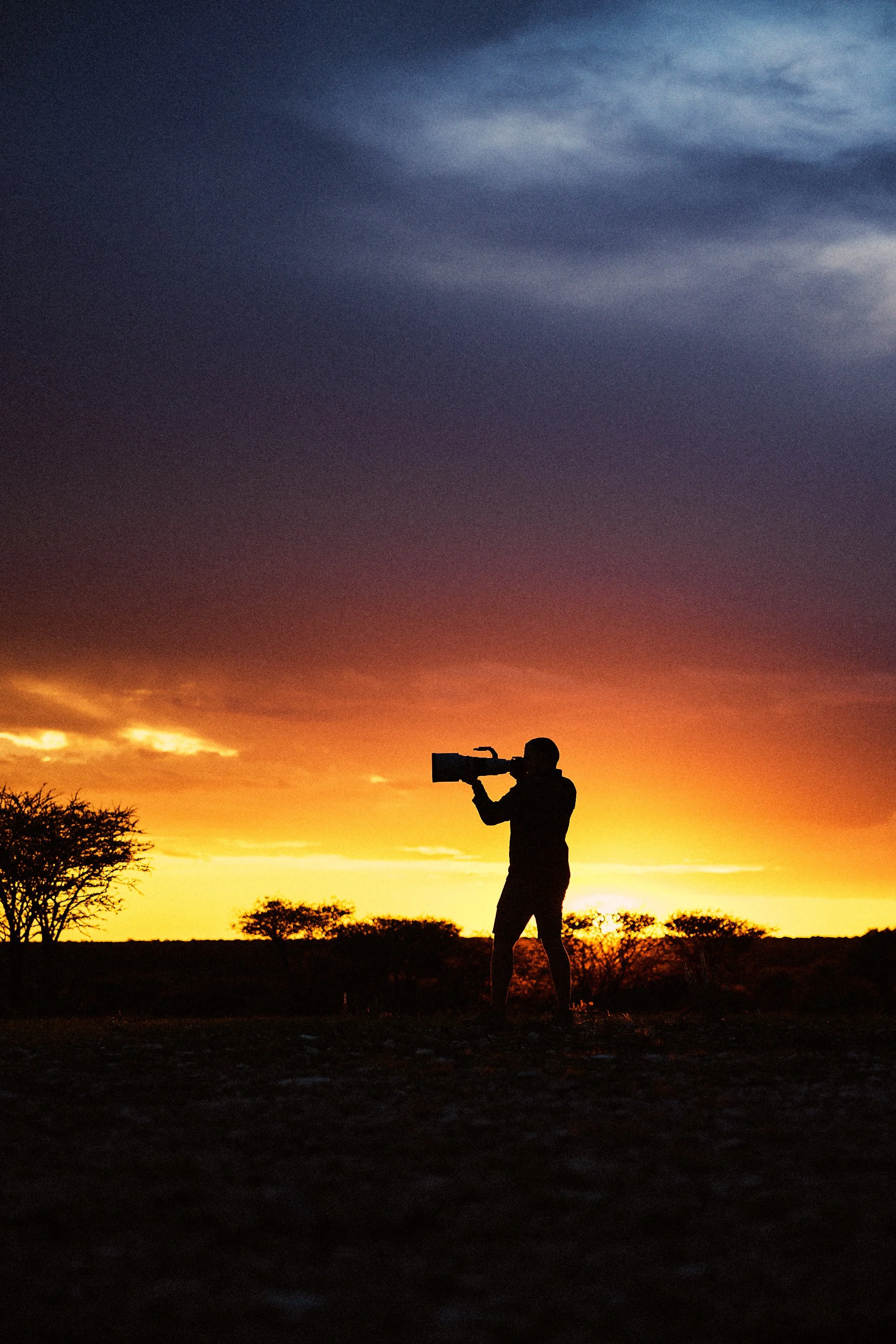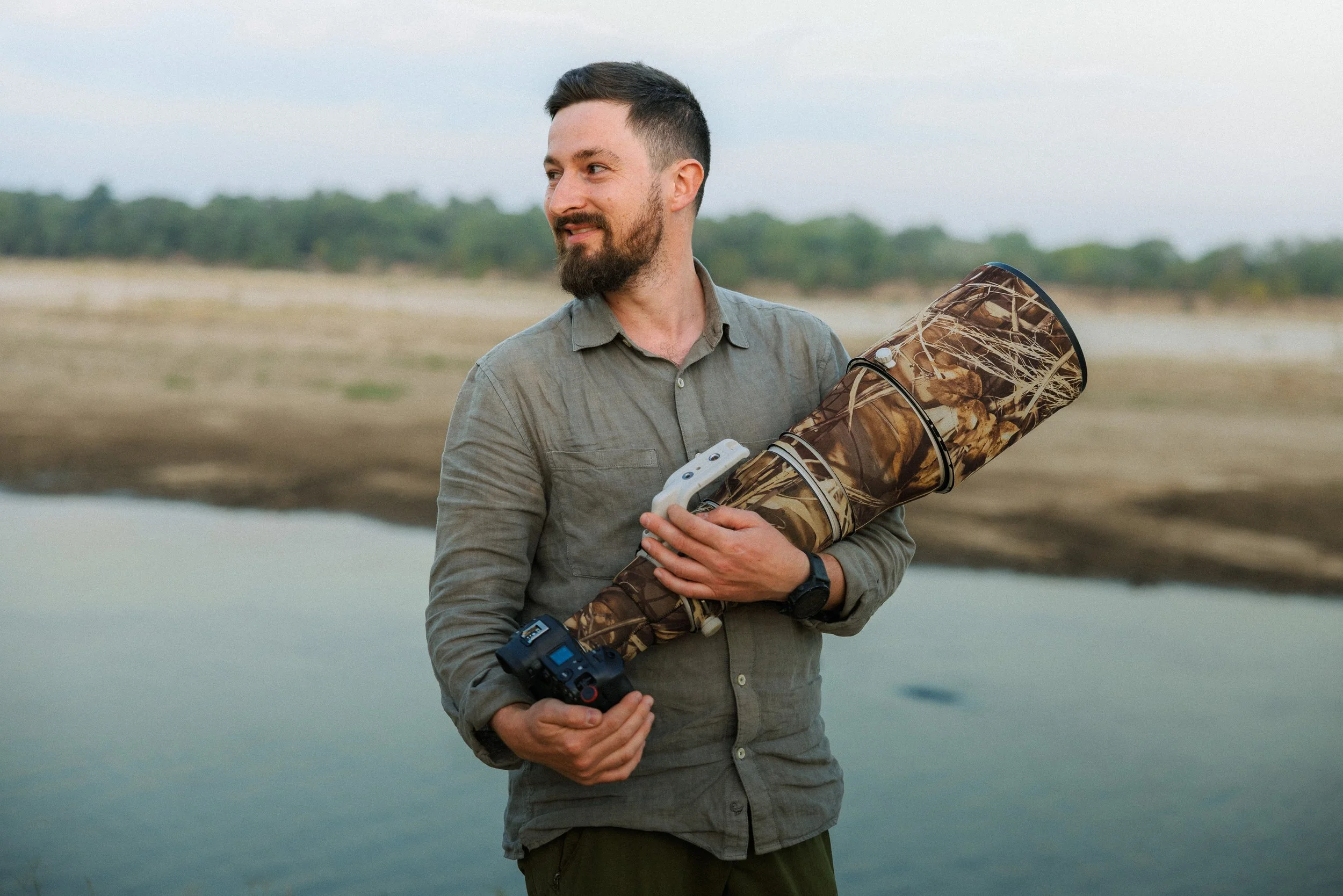Canon RF 100-300mm f/2.8 for Wildlife Photography - why I bought it
I’ve been shooting with the Canon RF 600mm f/4 for years. It’s an incredible lens—tack-sharp, with insane subject separation and enough reach to capture intimate wildlife portraits even in wide-open environments like Etosha or the Kalahari. But recently, I added the Canon RF 100-300mm f/2.8 to my kit. And yes—it’s one of the most expensive telephotos on the market. So why the change?
In this post, I’ll break down why I decided to invest in this lens, how it solves some of the frustrations I’ve had in the field, and what my new lens setup will look like on upcoming trips across southern Africa.
In the field with the 600mm f4
First Impressions: The Canon RF 100-300mm f/2.8
The first time I picked up the 100-300mm f/2.8, I could immediately feel the difference. Despite being a fast zoom, it’s shorter and lighter than the 600mm, making it far easier to handle—especially when shooting handheld or working out of a vehicle.
Key specs that matter for wildlife:
Constant f/2.8 aperture across the zoom range
Weight: just under 2.6 kg (5.7 lbs)
Built-in image stabilization (up to 5.5 stops)
Weather-sealed construction
On paper, this lens offers an ideal balance between speed, versatility, and image quality. But let’s talk about why I felt the need to add it at all.
Why the 600mm f/4 Isn’t Always Enough
I still love the 600mm f/4. It’s produced some of my favorite images—especially when I’m further back from the subject. With the right light and distance, it delivers perfect compression and clean backgrounds, making the subject pop.
But over the years, I’ve run into a few recurring challenges that the 600mm alone can’t solve.
1. Sometimes It’s Too Long
In places like South Luangwa or Slovenian bear hides, animals often come extremely close. At 600mm, I was constantly too tight, missing compositions entirely or forced to switch lenses rapidly. The Canon RF 100-500mm has helped bridge this gap, but its variable aperture (f/7.1 at the long end) severely limits its low-light performance.
2. Handholding Gets Exhausting
Yes, I can technically handhold the 600mm, but let’s be real—it gets heavy fast. I often skip potential shots just because I can’t hold position long enough or don’t want to deal with the physical strain. With the 100-300mm, that’s no longer a problem.
3. f/4 Isn’t Always Enough in Low Light
As good as f/4 is, it doesn’t compare to f/2.8 when the light starts to fade. Dawn and dusk are when wildlife activity peaks, and shooting wide open at 2.8 means lower ISO, cleaner files, and better shutter speeds—especially when filming video, where pushing ISO is even riskier.
Sometimes the 600mm is just too long, especially when animals are walking close to my car during a safari
Why I Chose the Canon RF 100-300mm f/2.8
At first, I considered going back to the 400mm f/2.8, which I’ve used in the past. But it’s bulky and heavy, and pairing it with the 600mm made my travel setup unwieldy. The 100-300mm f/2.8 offers many of the same benefits with none of the downsides.
Here’s what sealed the deal:
More Light = More Keepers
With f/2.8, I gain a full stop over the 600mm. In low-light conditions—shaded forests, cloudy mornings, golden hour—it’s a massive advantage, both for stills and video.
Zoom Flexibility Without Sacrificing Sharpness
I now have zoom capability from 100mm to 300mm, without compromising sharpness or performance. That’s perfect when working in fast-changing scenes, or when I want to adjust framing without moving position.
Easier to Handle, Especially on the Move
Whether I’m shooting from a car window, trekking on foot, or filming handheld, the 100-300mm is compact enough to manage comfortably. This means I shoot more, move faster, and react better in the field.
Works Seamlessly with Teleconverters
With a 1.4x teleconverter, the lens becomes a 140–420mm f/4, which still delivers superb quality. On a Super35 crop (an option that I can switch on and off when I film with the R5C), that gives me up to 630mm equivalent. That kind of flexibility is hard to beat.
Replaces Multiple Lenses
It’s rare that one lens can take the place of three, but in my case, it does. With this new addition, I’ve effectively replaced:
70-200mm f/2.8
100-500mm f/4.5–7.1
400mm f/2.8
For someone who travels often and packs for self-drive safaris or remote locations, simplifying my gear like this is a huge win.
📸 Want to get more out of the gear you already own?
That’s exactly what I help photographers do on my immersive workshops. Whether it’s Namibia, Zambia or Slovenia — every trip is built around learning how to see, compose, and shoot with purpose.
What About the 600mm?
Don’t worry—the 600mm isn’t going anywhere. I’m not replacing it, I’m complementing it. My field setup for the upcoming season looks like this:
600mm f/4 on Canon R3 – used with beanbags or monopods for long-range wildlife photography
100-300mm f/2.8 on Canon R5 – my handheld go-to for dynamic stills and video
100-500mm on the R5C – mounted on a fluid head for long-form horizontal video content
This 3-lens system gives me reach, flexibility, and creative control, whether I’m tracking lions in the Kalahari or filming rhinos in Damaraland.
Final Thoughts
Adding the Canon RF 100-300mm f/2.8 was a big investment, but after using it in the field, I can confidently say it’s going to change how I work. It solves real-world problems that the 600mm couldn't—and it simplifies my gear without sacrificing quality.
As I prep for my next adventures across Namibia, Botswana, and Zambia, I’m genuinely excited to see what this lens can do. It’s rare to find a tool that makes you feel more nimble and more capable—but this is one of them.
Let me know what lens setup you’re using for wildlife—especially if you’ve tested the 100-300mm yourself. Is it worth the hype for you too?
📚 Curious about how I use this lens in the field?
Sign up to get my free 100-page Wildlife Photography Guide — with tips on gear, composition, and real photo examples.

















